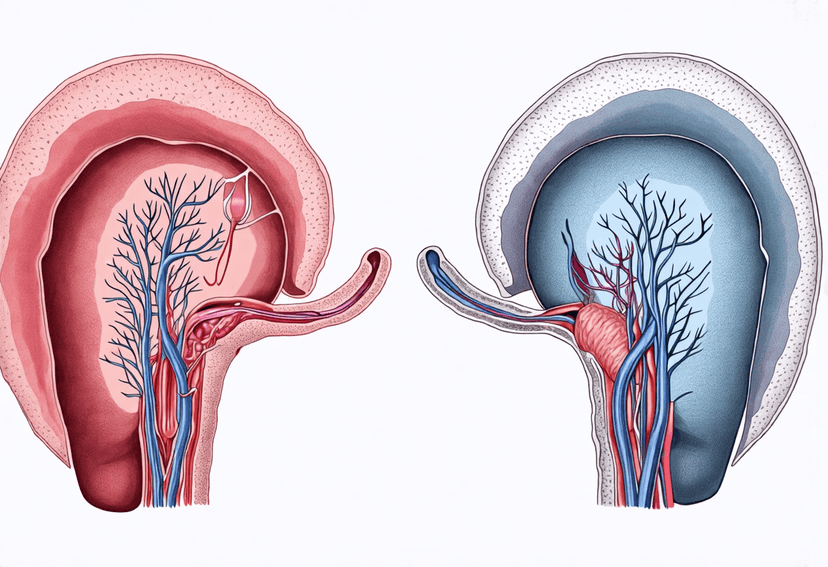الحزم تبدأ من
$6100
هل تحتاج إلى مساعدة في اختيار الحزمة المناسبة لرحلتك الطبية؟
بياناتك الصحية محمية معنا

تحويل الحياة بـ استئصال الرحم
استئصال الرحم هو إجراء جراحي يتضمن إزالة الرحم. إنها عملية شائعة تستخدم لعلاج عدة حالات تؤثر على الجهاز التناسلي للمرأة ، بما في ذلك الأورام الليفية الرحمية ، وبطانة الرحم ، وآلام الحوض المزمن ، والنزيف غير الطبيعي ، وسرطان الرحم أو عنق الرحم أو المبايض. اعتمادًا على سبب الجراحة وصحة المريض ، قد يتضمن العملية أيضًا إزالة عنق الرحم والمبيض والأنابيب الفالوب وغيرها من الهياكل المحيطة.
هناك عدة أنواع من استئصال الرحم:
- إجمالي استئصال الرحم: إزالة الرحم وعنق الرحم.
- استئصال الرحم الجزئي (أو الفرعي: إزالة الرحم أثناء ترك عنق الرحم سليمة.
- استئصال الرحم الجذري: عملية جراحية مكثفة حيث تتم إزالة الرحم والأنسجة حول عنق الرحم وعنق الرحم ، وغالبًا ما تتم إزالة المبيض والأنابيب الفالوب وجزء من المهبل ، وعادة ما يتم استخدامه عند وجود السرطان.
يمكن إجراء العملية من خلال طرق جراحية مختلفة:
- استئصال الرحم عن طريق البطن: ينطوي على شق في أسفل البطن.
- استئصال الرحم المهبلي: تتم إزالة الرحم من خلال المهبل ، ولا يترك أي ندوب واضحة.
- استئصال الرحم بالمنظار (أو بمساعدة الروبوت): التقنيات الغازية الحد الأدنى باستخدام شقوق صغيرة للكاميرات والأدوات.
يمكن أن يختلف وقت التعافي وتأثيره على حياة المريضة بناءً على نوع عملية استئصال الرحم التي تم إجراؤها والطريقة المستخدمة. وبشكل عام يؤدي إلى انقطاع الدورة الشهرية وعدم القدرة على الإنجاب، مما قد يكون له آثار عاطفية وجسدية كبيرة. تعد الرعاية بعد العملية الجراحية أمرًا بالغ الأهمية للتعافي، وقد تكون المناقشات حول العلاج بالهرمونات البديلة ضرورية إذا تمت إزالة المبيضين.
4.0
90% مصنف قيمة مقابل المال
لماذا تختارونا؟
99%
معدل النجاح
16+
استئصال الرحم الجراحين
0
استئصال الرحم
25+
المستشفيات في جميع أنحاء العالم
7+
الحياة التي تم لمسها
نظرة عامة
استئصال الرحم هو إجراء جراحي يتضمن إزالة الرحم. إنها عملية شائعة تستخدم لعلاج عدة حالات تؤثر على الجهاز التناسلي للمرأة ، بما في ذلك الأورام الليفية الرحمية ، وبطانة الرحم ، وآلام الحوض المزمن ، والنزيف غير الطبيعي ، وسرطان الرحم أو عنق الرحم أو المبايض. اعتمادًا على سبب الجراحة وصحة المريض ، قد يتضمن العملية أيضًا إزالة عنق الرحم والمبيض والأنابيب الفالوب وغيرها من الهياكل المحيطة.
هناك عدة أنواع من استئصال الرحم:
- إجمالي استئصال الرحم: إزالة الرحم وعنق الرحم.
- استئصال الرحم الجزئي (أو الفرعي: إزالة الرحم أثناء ترك عنق الرحم سليمة.
- استئصال الرحم الجذري: عملية جراحية مكثفة حيث تتم إزالة الرحم والأنسجة حول عنق الرحم وعنق الرحم ، وغالبًا ما تتم إزالة المبيض والأنابيب الفالوب وجزء من المهبل ، وعادة ما يتم استخدامه عند وجود السرطان.
يمكن إجراء العملية من خلال طرق جراحية مختلفة:
- استئصال الرحم عن طريق البطن: ينطوي على شق في أسفل البطن.
- استئصال الرحم المهبلي: تتم إزالة الرحم من خلال المهبل ، ولا يترك أي ندوب واضحة.
- استئصال الرحم بالمنظار (أو بمساعدة الروبوت): التقنيات الغازية الحد الأدنى باستخدام شقوق صغيرة للكاميرات والأدوات.
يمكن أن يختلف وقت التعافي وتأثيره على حياة المريضة بناءً على نوع عملية استئصال الرحم التي تم إجراؤها والطريقة المستخدمة. وبشكل عام يؤدي إلى انقطاع الدورة الشهرية وعدم القدرة على الإنجاب، مما قد يكون له آثار عاطفية وجسدية كبيرة. تعد الرعاية بعد العملية الجراحية أمرًا بالغ الأهمية للتعافي، وقد تكون المناقشات حول العلاج بالهرمونات البديلة ضرورية إذا تمت إزالة المبيضين.



























